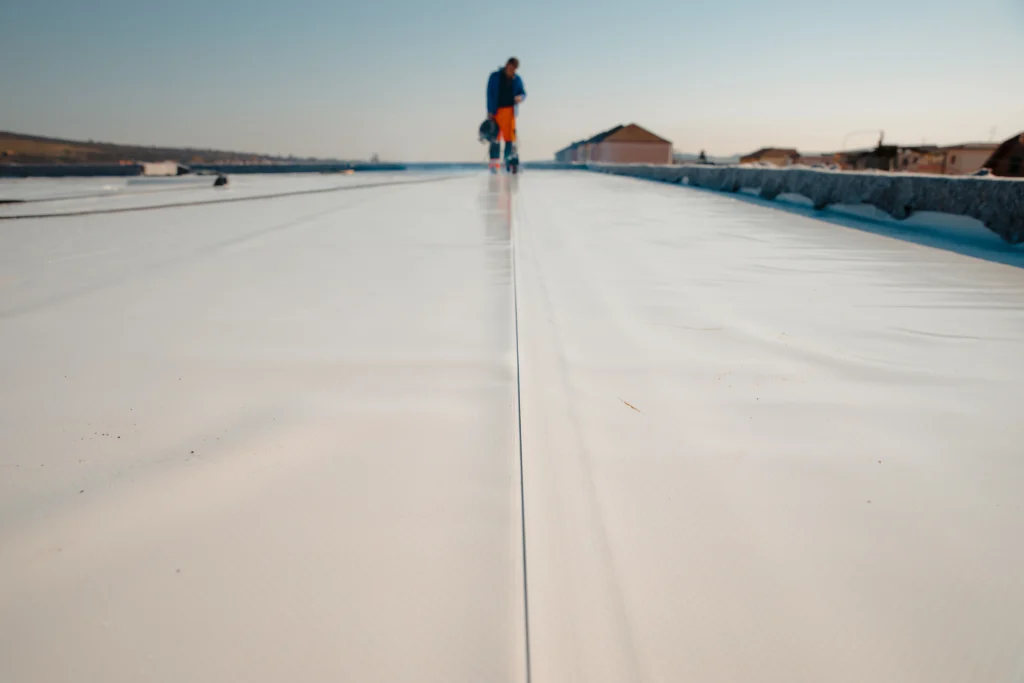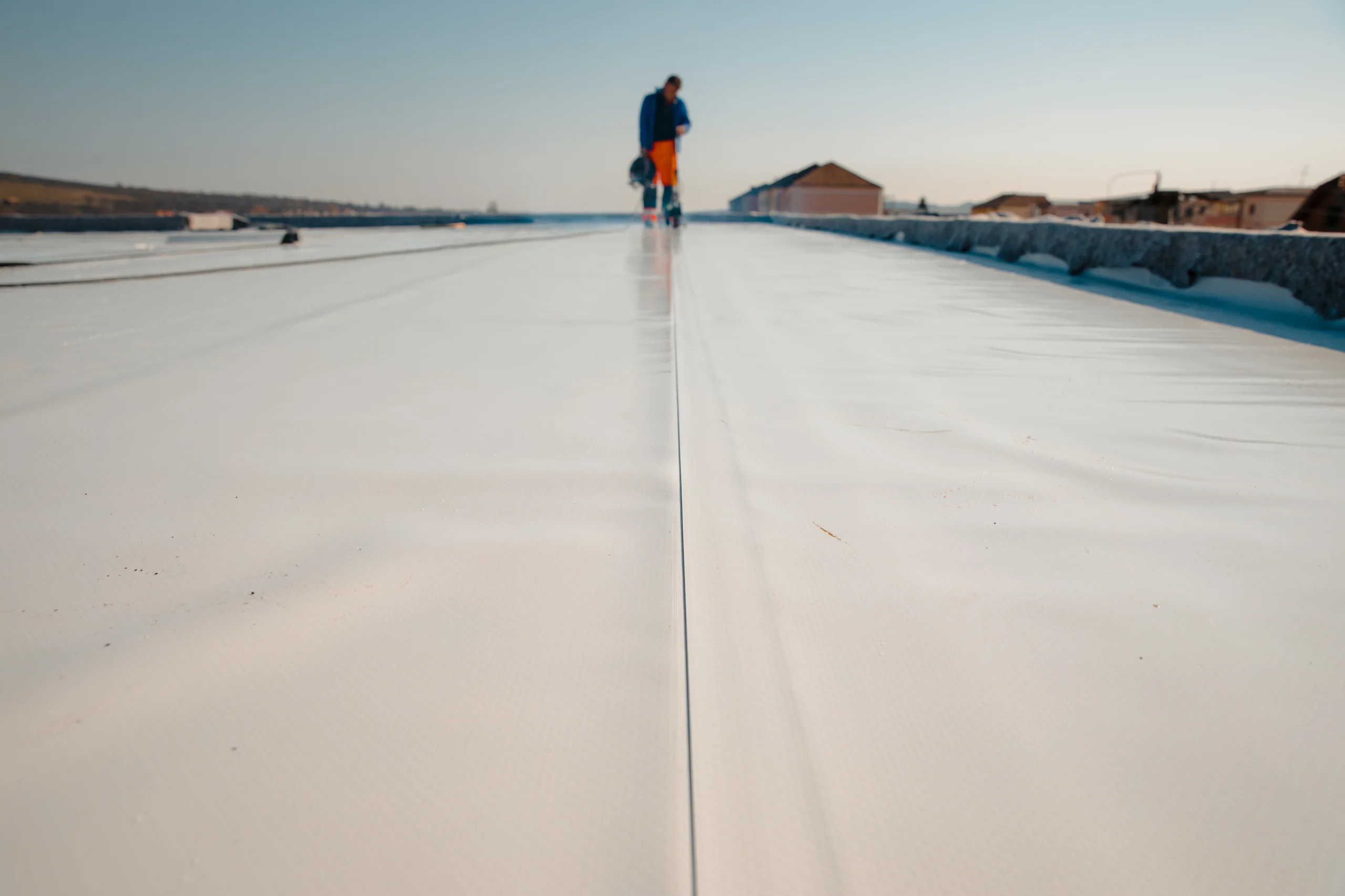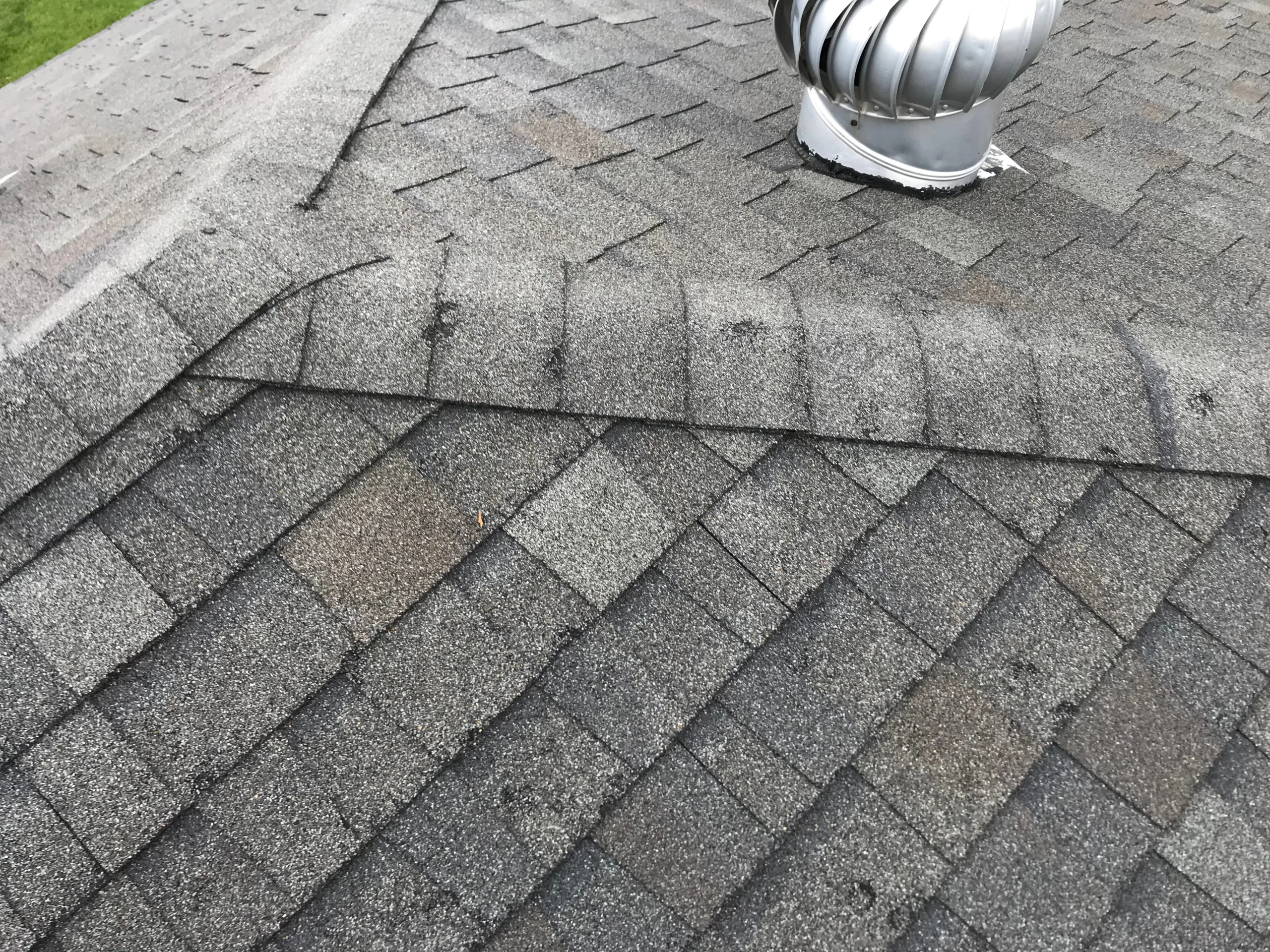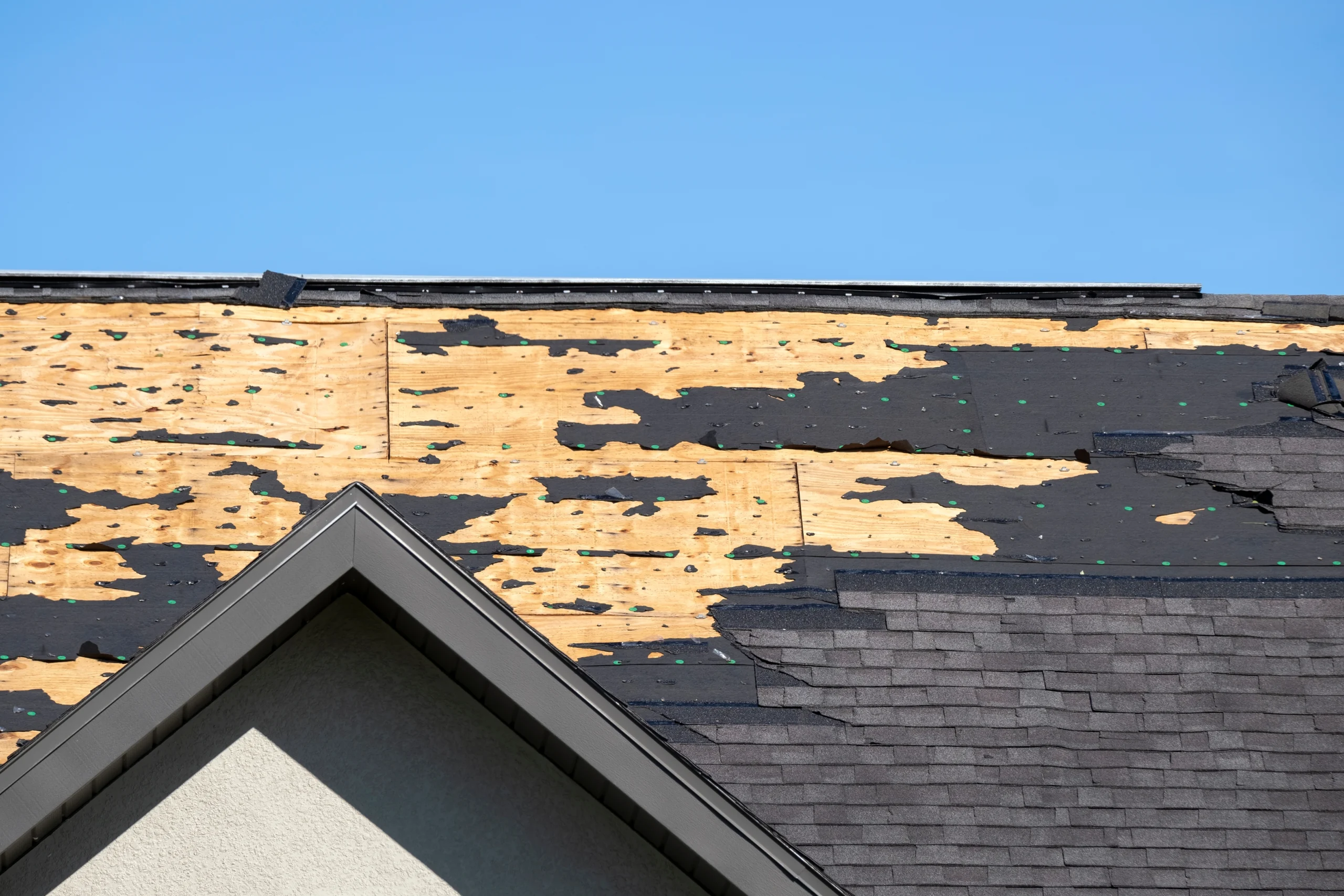Calgary’s unpredictable weather puts every commercial roof to the test. Constant freeze–thaw cycles, hail, and UV exposure can shorten the lifespan of flat roofing systems faster than most property owners expect. These conditions cause water pooling, seam separation, and gradual membrane fatigue that weaken roof performance over time.
How Temperature Fluctuations Affect Flat Roofs
Few cities experience the same temperature swings as Calgary. Within a single day, the city can see changes of over 20 degrees, causing materials like TPO and EPDM to repeatedly expand and contract. This movement creates stress points that loosen fasteners and stretch seams. Over months of thermal cycling, these minor shifts develop into cracks, openings, and leaks.
Temperature fluctuation damage is especially common in older torch-on systems where aging bitumen becomes brittle. When this material expands under heat, it loses elasticity and can tear around vents or flashing. Regular inspections by professionals familiar with local weather patterns are the best defense against these problems.
The Freeze–Thaw Effect on Roofing Systems
One of the most damaging weather patterns in Alberta is the freeze–thaw cycle. During winter, snowmelt and standing water seep into small membrane imperfections. As temperatures drop again, the water freezes and expands, forcing seams apart and blistering the surface. Repeated cycles of expansion and contraction can turn minor pooling into serious leaks within a single season.
Effective roof waterproofing helps control this risk by improving drainage and sealing problem areas before freezing occurs. Straight Path Construction inspects flat roofs for uneven surfaces and ponding that may allow moisture to collect during colder months, ensuring water can drain freely before it refreezes.
UV Exposure and Hail Damage Over Time
Calgary averages more than 330 days of sunlight per year, and that level of exposure has a measurable impact on flat roof systems. Ultraviolet radiation breaks down protective coatings, dries out membranes, and accelerates the aging of adhesives. When combined with hail impacts, this creates the perfect environment for premature wear.
Even small hailstones can bruise roof membranes or create dents that hold water. Over time, these weakened areas collect debris and develop leaks. Regular visual checks and professional inspections can help catch UV or hail damage early, allowing timely repairs before the structure beneath is affected.
Flat Roof Maintenance Practices That Extend Lifespan
Preventive care is the best way to offset Calgary’s climate challenges. Key elements of flat roof maintenance include:

- Clearing debris to prevent water pooling around drains and scuppers
- Inspecting flashing, seams, and parapets for separation or lifting
- Checking roof membranes for punctures after hailstorms
- Scheduling biannual inspections in spring and fall to track seasonal wear
Straight Path Construction performs detailed maintenance programs for commercial and industrial properties, ensuring roofs remain watertight and compliant with warranty requirements.
Choosing the Right Flat Roofing System for Calgary’s Climate
The material used can make a major difference in performance. TPO roofing offers excellent UV resistance and energy efficiency but requires precise seam welding. EPDM rubber roofing is flexible and performs well in extreme cold, making it a strong choice for Alberta winters. Torch-on roofing systems provide strong waterproofing for low-slope applications but need consistent upkeep to prevent blistering.
Average Lifespan and Performance of Common Flat Roof Materials:
| Material | Typical Lifespan in Calgary | Key Vulnerability | Best Use Case |
|---|---|---|---|
| TPO | 15–20 years | UV breakdown and seam stress | Large commercial roofs needing reflectivity |
| EPDM | 20–25 years | Seam separation over time | Cold-climate buildings needing flexibility |
| Torch-on | 15–20 years | Blistering from heat and moisture | Low-slope or industrial roofs |
These figures vary depending on installation quality, maintenance frequency, and exposure level, but they offer a realistic benchmark for Calgary’s climate conditions.
Selecting the right system often depends on building type, insulation, and exposure. Straight Path Construction’s specialists evaluate each property’s unique needs to recommend materials that deliver long-term durability and cost control.
Protecting Your Commercial Roof from Calgary’s Weather
Between high UV levels, temperature swings, and frequent hailstorms, Calgary’s weather can reduce the lifespan of any flat roof if left unchecked. Consistent maintenance, proper drainage, and professional inspections are essential for extending service life and preventing expensive damage.
To schedule an evaluation or discuss long-term maintenance options, contact Straight Path Construction today and safeguard your commercial property year-round.


